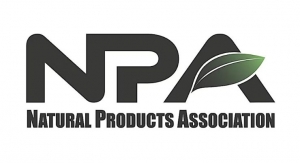10.01.14
Hispanics have taken to using supplements in greater numbers over the last five years, and comprise the fastest growing ethnic population for vitamin and mineral use, according to a recent report from market research publisher Packaged Facts titled “Nutritional Supplements in the U.S., 6th Edition.”
The market growth in this segment is particularly noticeable when compared to the decline in supplement use among Asian consumers, and essentially flat growth within the Caucasian population. However, supplement use among Hispanics tends to be irregular, with many only taking them one to three times a month rather than daily or more than once a day. This suggests marketers would do well to tap into the Latino market and promote the benefits of regular supplement use in an effort to boost usage within this fiscally potent consumer demographic, noted Packaged Facts Research Director David Sprinkle.
In recent years, the U.S. dietary supplements market has faced various challenges, but still managed to experience moderate growth between 2009 and 2013. Sales rose from $9 billion in 2009 to $12 billion last year. Key factors limiting growth were negative media coverage and the rise in functional foods and beverages. Almost 90% of Americans now consume vitamin- or mineral-fortified foods, and as much as 20% of adults are cutting back on their use of supplements because of fortified food intake.
Despite the obstacles, Packaged Facts predicted the U.S. nutritional supplements market will grow about 6% annually through 2018, hitting sales of $16 billion in that year. With effective marketing, Latinos will continue to be a bright spot going forward. Other factors facilitating sales growth will be America’s aging population, rising consumer involvement in personal health, and a growing expectation of personalization for virtually all services and products. Declines currently seen among omega-3/fish oil and calcium/bone supplements will continue to be offset by encouraging gains by probiotic nutritional supplements marketed for digestive health.
For more information: www.packagedfacts.com.
The market growth in this segment is particularly noticeable when compared to the decline in supplement use among Asian consumers, and essentially flat growth within the Caucasian population. However, supplement use among Hispanics tends to be irregular, with many only taking them one to three times a month rather than daily or more than once a day. This suggests marketers would do well to tap into the Latino market and promote the benefits of regular supplement use in an effort to boost usage within this fiscally potent consumer demographic, noted Packaged Facts Research Director David Sprinkle.
In recent years, the U.S. dietary supplements market has faced various challenges, but still managed to experience moderate growth between 2009 and 2013. Sales rose from $9 billion in 2009 to $12 billion last year. Key factors limiting growth were negative media coverage and the rise in functional foods and beverages. Almost 90% of Americans now consume vitamin- or mineral-fortified foods, and as much as 20% of adults are cutting back on their use of supplements because of fortified food intake.
Despite the obstacles, Packaged Facts predicted the U.S. nutritional supplements market will grow about 6% annually through 2018, hitting sales of $16 billion in that year. With effective marketing, Latinos will continue to be a bright spot going forward. Other factors facilitating sales growth will be America’s aging population, rising consumer involvement in personal health, and a growing expectation of personalization for virtually all services and products. Declines currently seen among omega-3/fish oil and calcium/bone supplements will continue to be offset by encouraging gains by probiotic nutritional supplements marketed for digestive health.
For more information: www.packagedfacts.com.



























